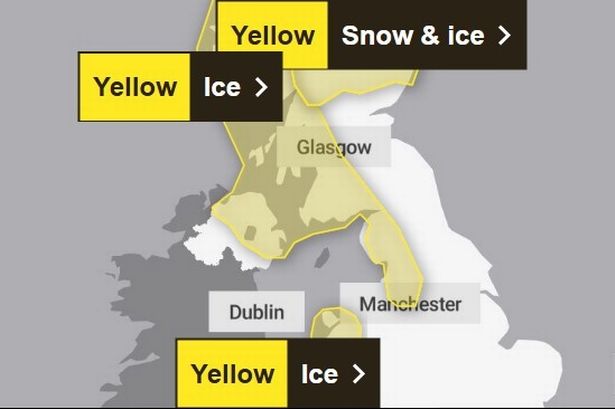The UK is bracing for a widespread spell of wintry weather, with yellow weather warnings issued for snow and ice across vast swathes of the country. These warnings signal potential disruptions to daily life, impacting travel, infrastructure, and potentially posing risks to vulnerable individuals. The anticipated snowfall, coupled with icy conditions, is expected to affect millions, beginning on Friday and potentially continuing throughout the weekend. The Met Office has urged residents to stay vigilant, prepare for adverse conditions, and heed official guidance to ensure their safety and minimize inconvenience. The specific areas covered by the warnings encompass a significant portion of the UK, indicating the widespread nature of the impending weather system.
The developing meteorological situation is driven by a confluence of factors, including the arrival of cold air masses from the north and the presence of moist air closer to the ground. This combination creates ideal conditions for snowfall, particularly in elevated regions. The initial band of snow is expected to sweep across the country from the northwest, impacting Scotland and Northern Ireland before moving southeastwards. As this initial front progresses, it is anticipated to bring widespread, albeit light, snow accumulations to various parts of England and Wales. However, the precise locations and amounts of snowfall remain subject to ongoing forecast updates. The potential for ice formation adds another layer of complexity and risk, particularly overnight and during early morning hours when temperatures are lowest.
The projected impact of this wintry weather event extends beyond mere inconvenience. Travel disruptions are highly probable, with potential delays and cancellations affecting road, rail, and air travel. Commuters are advised to check travel updates before embarking on their journeys and consider alternative modes of transport where possible. Motorists should exercise extreme caution, especially on untreated roads, and ensure their vehicles are adequately equipped for winter conditions. The combination of snow and ice poses a significant risk of accidents, and drivers should reduce speed, maintain a safe distance from other vehicles, and be prepared for sudden changes in road conditions.
Beyond transportation, the anticipated snow and ice could also disrupt essential services, including power supplies and telecommunications. Heavy snowfall can weigh down power lines, leading to outages, and icy conditions can make repairs more challenging. Similarly, telecommunications infrastructure can be vulnerable to weather-related damage. Residents in affected areas are advised to have contingency plans in place, such as ensuring they have adequate supplies of food and water, alternative heating sources, and a means of communication in case of power or phone outages. Furthermore, checking on vulnerable neighbors and relatives is highly recommended.
The prolonged period of cold weather and potential snowfall presents a specific set of challenges for vulnerable populations, including the elderly, individuals with pre-existing health conditions, and those experiencing homelessness. Exposure to cold temperatures can exacerbate existing health issues and increase the risk of hypothermia. Local authorities and community organizations are urged to provide support and resources to those most in need, including access to warm shelters, food, and medical assistance. Individuals are encouraged to check on vulnerable neighbors and offer assistance where possible. Public awareness campaigns will emphasize the importance of staying warm, hydrated, and informed during the cold snap.
While the specific details of the snowfall and ice accumulation remain subject to change as the weather system progresses, the overall outlook points towards a significant wintry event impacting a large portion of the UK. The combination of snow, ice, and potentially strong winds underscores the need for preparedness and caution. By staying informed, following official guidance, and taking necessary precautions, residents can mitigate the risks and disruptions associated with this weather event and ensure their safety and well-being. Regular updates from the Met Office and local authorities will provide the most current information, allowing individuals to adapt their plans as needed and navigate the challenges posed by the impending winter weather.














